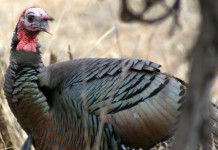Alligator attacks are rare in Texas, but in the wake of another attack in Florida in which a 2-year-old boy was dragged into a lagoon at a Disney hotel near Orlando, it’s a good time to urge caution and understanding about the reptiles, especially during breeding season.
GATOR HISTORY, NUMBERS: To gauge the alligator situation in Florida and other southern states, you first have to look at the history of the animals.
Alligators were put on the Endangered Species List as part of the Endangered Species Act in 1973. As a result of enforced laws outlawing the killing and selling of alligator hides and meat, the animals were able to readily breed and thrive and in 1985, alligators were taken off the endangered list.
The population in Florida is anywhere from 1 million to 2 million, depending on who you talk to.
According to Florida Fish and Wildlife Conservation Commission data, alligators are found in all 67 counties in Florida.
Texas Parks & Wildlife estimates the Texas alligator population to be the highest in Orange, Jefferson and Chambers counties, located along the Gulf Coast and bordering Louisiana. There is no statewide data, but the estimate in these three counties is nearly 300,000 animals.
TPWD numbers also show alligators inhabit almost half of Texas’ 254 counties.
TEXAS ALLIGATOR HUNTING: Texas Parks & Wildlife offers alligator hunting in “core” counties of southeast Texas for three weeks in September while there is a “non-core” season in other counties from April through June.
There are multiple means and methods for harvesting alligators in Texas, including using hook and line, archery gear, handheld snares and gigs. While firearms are a legal method, they’re only allowed to take gators on private property. There also is no size restriction on alligators in Texas but you must keep what you hook.
Biologists and game wardens strongly urge even seasoned hunters to exercise their best judgment when hunting alligators and there are orientation classes for those selected in the state’s public hunting program. It’s also a good course even if you are hunting private property.
GATOR ATTACKS IN TEXAS: Though there are hundreds of thousands of alligators on the landscape in southeast Texas, attacks are rare. Fatal attacks are almost nonexistent in Texas, and in fact, the deadly encounter in July 2015 involving a 28-year-old man and a gator near a marina in Orange was the first since 1836, the year the Alamo fell to Mexican forces.
In that case, authorities said, the man was documented to have taunted the alligator measuring roughly 11 feet in length before jumping into the water.
Texas state record alligator killed at Choke Canyon Reservoir
NUISANCE COMPLAINTS: Human expansion affects change not only on the environment but on the way people deal with environmental issues. Even 10 years ago, it would have been absurd for a Florida resident or someone else who was in close proximity with alligators to file a “nuisance” complaint.
Complaints are filed by residents who think an alligator is a danger to them, their children or their pets. In the past, these complaints would end up with a licensed trapper coming out and capturing the animal alive. It would then be taken to a remote area and set loose.
Now, these animals are killed, and their meat and hides are sold through legal channels. It is illegal to sell any part of an alligator without a permit.
Typically nuisance alligators are more than 4 feet in length and pose a threat, but many people who have moved into alligator country are not savvy enough to figure out whether an alligator actually poses a significant threat. The FWC receives an average of more than 15,000 alligator complaints annually, resulting in the removal of 5,000 animals.
Seeing an alligator doesn’t mean you have to call the game warden. Most wildlife officials subscribe to the theory of “live and let live.”
Alligator Fact Sheet
- Alligators have two sets of eyelids. One set is much like ours, closing from top to bottom and a second set, which is transparent, closes from front to rear; this set is known as a nicatating membrane.
- Alligator jaw muscles have little strength for opening their mouth, but the muscles that shut them are very strong and have awesome force, about 300 pounds per square inch in an adult.
- Alligators do not require as much food as we do. In the summer a large alligator may only eat once or twice a week.
- A mature alligator has 80 conical shaped teeth. They have no molars for crushing and grinding food therefore they swallow their food whole. Lost teeth are replaced. An alligator may go through 2,000 to 3,000 teeth in its lifetime.
- Large adult alligators can hold their breath up to 45 minutes. The amount of time they can remain submerged depends upon their size and the water temperature.
- Alligators mate once a year during the spring breeding season. Male alligators make loud throaty bellowing roars to attract females.
- Females seldom reach over 9 feet in length, while males may reach 14 feet.
- Female alligators lay their eggs during June to early July. The female alligator builds her nest above ground. The nest acts like a giant incubator. Decomposition of the nest material and sunlight produce heat to warm the eggs.
- A nest may contain 15 to 60 eggs carefully layed in several layers of marsh vegetation. The eggs hatch in about two months.
Source: Texas Parks & Wildlife
Nuisance Alligator Protocol in Texas





















